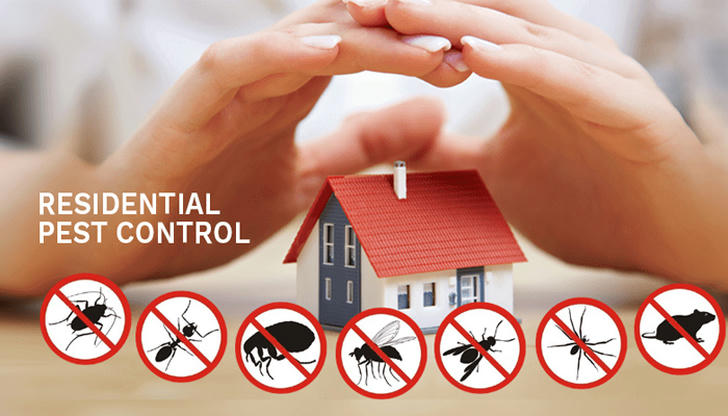Pest Control at Home: Natural Remedies vs. Chemical
Dealing with household pests can be frustrating, unsanitary, and sometimes even dangerous. From ants in the kitchen to roaches in the bathroom, pests often invade our homes looking for food, shelter, or water. Traditionally, chemical pesticides have been the go-to solution for homeowners, but concerns about toxicity, environmental impact, and long-term health risks have sparked growing interest in natural alternatives.

This article explores both natural remedies and chemical methods for pest control at home. We'll compare their effectiveness, safety, costs, and long-term impact to help you choose the best approach for your household.
Why Pest Control Matters
Pests are more than just a nuisance—they can:
- Damage property: Termites destroy wood; rodents chew wires.
- Spread disease: Cockroaches, mosquitoes, and rodents can transmit illnesses.
- Trigger allergies: Pest droppings and dander can worsen asthma and respiratory issues.
- Contaminate food: Insects and rodents can spoil stored pantry goods.
Effective pest control not only improves comfort but protects your family’s health and your home’s integrity.
Understanding the Two Main Approaches
1. Natural Remedies
Also known as organic or non-toxic pest control, this category includes:
- Essential oils (e.g., peppermint, eucalyptus, tea tree)
- Vinegar and baking soda solutions
- Diatomaceous earth
- Borax or boric acid
- Sticky traps or light traps
- Biological controls (like nematodes for soil pests)
Natural methods rely on plant-based or mineral-based compounds, physical barriers, and lifestyle changes to deter pests.
2. Chemical Pest Control
This includes synthetic pesticides and insecticides, commonly found in:
- Sprays and aerosols
- Foggers or "bug bombs"
- Baits and traps with chemical lures
- Professional fumigation services
- Granules and concentrates for outdoor use
These solutions are regulated and approved by bodies like the U.S. Environmental Protection Agency (EPA) or European Chemicals Agency (ECHA).
Comparing Natural Remedies vs. Chemical Methods
| Criteria | Natural Remedies | Chemical Methods |
|---|---|---|
| Effectiveness | Moderate and gradual | Fast and powerful |
| Safety | Safer for kids, pets, and environment | May be toxic; needs caution |
| Cost | Generally cheaper; DIY-friendly | Can be expensive (especially professional services) |
| Environmental Impact | Minimal | Can affect water, air, and non-target species |
| Resistance Risk | Low | High—pests may become resistant |
| Odor | Mild or pleasant | Often strong or unpleasant |
| Application Frequency | More frequent | Less frequent due to potency |
Common Household Pests and Remedies
1. Ants
Natural Remedies:
- White vinegar spray disrupts scent trails
- Cinnamon or peppermint oil as repellents
- Diatomaceous earth damages their exoskeletons
Chemical Options:
- Ant bait traps (borax or hydramethylnon)
- Insecticidal sprays for nests and perimeters
Best Practice: Combine vinegar cleaning with sealing entry points for long-term control.

2. Cockroaches
Natural Remedies:
- Borax and sugar mixture attracts and dehydrates them
- Bay leaves as natural repellents
- Diatomaceous earth applied in corners
Chemical Options:
- Gel bait with fipronil or hydramethylnon
- Insect growth regulators (IGRs)
- Sprays and foggers (use with caution)
Tip: Roaches thrive in moist environments. Fix leaks and avoid leaving dirty dishes overnight.
3. Mosquitoes
Natural Remedies:
- Citronella candles or oil
- Eliminate standing water (breeding grounds)
- Plant marigolds or lavender
Chemical Options:
- DEET-based sprays
- Insecticide-treated nets or coils
- Professional misting systems
Note: Natural repellents may work for short periods; chemicals offer longer protection but raise health concerns.
4. Flies
Natural Remedies:
- Apple cider vinegar traps
- Essential oils like eucalyptus and lemongrass
- UV light traps
Chemical Options:
- Aerosol sprays with pyrethrins
- Baited fly strips or sticky ribbons
Tip: Keep trash covered and clean drains regularly to prevent fly breeding.
5. Termites
Natural Remedies:
- Orange oil (d-limonene) treatments
- Beneficial nematodes (microscopic worms that kill termites)
- Cardboard traps to detect infestations
Chemical Options:
- Soil treatments (fipronil, imidacloprid)
- Wood injections or foam treatments
- Full-house fumigation (for severe infestations)
Reminder: Termites are best handled by professionals due to structural risks.
6. Mice and Rats
Natural Remedies:
- Peppermint oil cotton balls
- Ultrasonic repellents
- Traps without poison
Chemical Options:
- Rodenticides (extremely toxic)
- Bait stations
- Glue traps (controversial due to cruelty concerns)
Warning: Rodenticides are hazardous to children, pets, and wildlife. Use extreme caution.
Pros and Cons Summary
Natural Remedies
Pros:
- Low toxicity
- Eco-friendly
- Often DIY and affordable
- Less disruption to home
Cons:
- Slower results
- Less effective for large infestations
- Requires consistent effort
Chemical Methods
Pros:
- Rapid, powerful results
- Effective for infestations
- Long-lasting effects
Cons:
- Toxic exposure risks
- Potential harm to pets and pollinators
- Resistance buildup in pests
- Environmental concerns

Integrated Pest Management (IPM): Best of Both Worlds
Integrated Pest Management (IPM) is a holistic, balanced approach that combines both natural and chemical strategies, prioritizing prevention and minimal chemical use.
Core Steps in IPM:
- Inspection – Identify the pest and assess the infestation.
- Prevention – Seal cracks, remove attractants, and practice sanitation.
- Mechanical Controls – Use traps, screens, and barriers.
- Biological Controls – Introduce beneficial insects or organisms.
- Chemical Treatment – Apply as a last resort, in targeted areas only.
IPM emphasizes long-term prevention rather than just reacting to problems.
When to Choose Natural vs. Chemical
| Situation | Recommended Approach |
|---|---|
| Minor pest presence | Natural remedies and prevention |
| Repeated seasonal issues | IPM with light chemical use |
| Large infestation | Professional chemical treatment |
| Health/sensitivity concerns (kids, pets, asthma) | Go natural or use IPM with low-toxicity chemicals |
| Pest with structural threat (termites, carpenter ants) | Call licensed pest control professionals |
Safety Tips for Any Method
For Natural Remedies:
- Avoid overusing essential oils around pets (especially cats)
- Store borax and diatomaceous earth away from children
- Test small areas for allergic reactions (on skin or surfaces)
For Chemical Methods:
- Read and follow all label instructions
- Keep children and pets away during and after application
- Wear gloves and a mask during use
- Ventilate rooms thoroughly
- Store products in locked cabinets
Long-Term Pest Prevention Tips
- Seal Entry Points: Caulk cracks, install door sweeps, repair screens.
- Store Food Properly: Use airtight containers and clean up crumbs.
- Manage Moisture: Fix leaks, ventilate damp spaces.
- Take Out Trash Regularly: And keep bins sealed.
- Maintain Landscaping: Trim bushes, keep firewood away from walls.
Prevention is more effective (and affordable) than reaction.
Final Thoughts
Natural and chemical pest control methods both have their place in the modern home. Choosing the right strategy depends on the severity of the infestation, your sensitivity to chemicals, and your commitment to sustainability. While chemical treatments offer speed and power, natural remedies provide safer, environmentally-conscious alternatives for everyday situations.
For most households, a combined approach—like Integrated Pest Management—offers the best long-term results with minimal risks. By understanding your options and practicing regular prevention, you can enjoy a cleaner, safer, and pest-free home.
